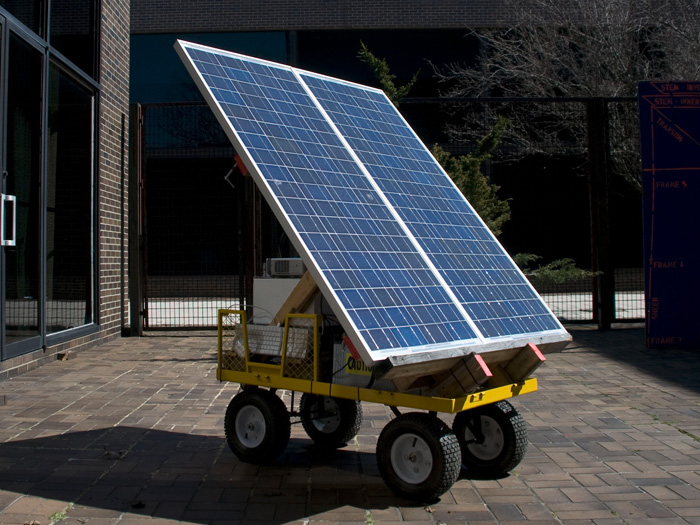Environmental Risk Assessment Rover (ERAR–AT) is a mobile, solar- and GPS-powered, networked video installation that will accumulate and aggregate the environmental threats and risks faced by the population in its immediate location. ERAR-AT performs the difficulty of perceiving, evaluating, and understanding risk scenarios and presents an assessment of its given locale by producing a unique fourteen-tiered threat level embedded live within video projections onto local natural and architectural surfaces.
“Sooner rather than later, one comes up against the law that so long as risks are not recognized scientifically, they do not exist–at least not legally, medically, technologically, or socially, and they are thus not prevented, treated or compensated for. No amount of collective moaning can change this, only science. Scientific judgment’s monopoly on truth therefore forces the victims themselves to make use of all the methods and means of scientific analysis in order to succeed with their claims.”
—German risk theorist Ulrich Beck
What kind of local and global environmental risks do you face everyday? How far is the closest superfund site or nuclear power plant or agribusiness? How do the 148 industrial chemicals already in every American human body interact with the synthetic hormones and antibiotics in the dairy products we eat? How many chemicals are in human breast milk? How do the chemicals in your toothpaste interact with the pesticides on your food? Why has modernity, which was supposed to create a sense of security, produced more anxiety and threats than ever? Can scientific data and research help us understand the “riskiness” of contemporary life?
Environmental Risk Assessment Rover–AT (ERAR–AT) débuted at “Off the Grid,” March 30 – June 1, 2008, at the Neuberger Museum of Art, curated by Jacqueline Shilkoff (Neuberger Museum) and Galen Joseph-Hunter, Tianna Kennedy, Tom Roe (free103point9). “Off the Grid” featured works that subvert and circumvent conventional infrastructures.
ERAR Programming & Research Assistant: Colin Twomey


